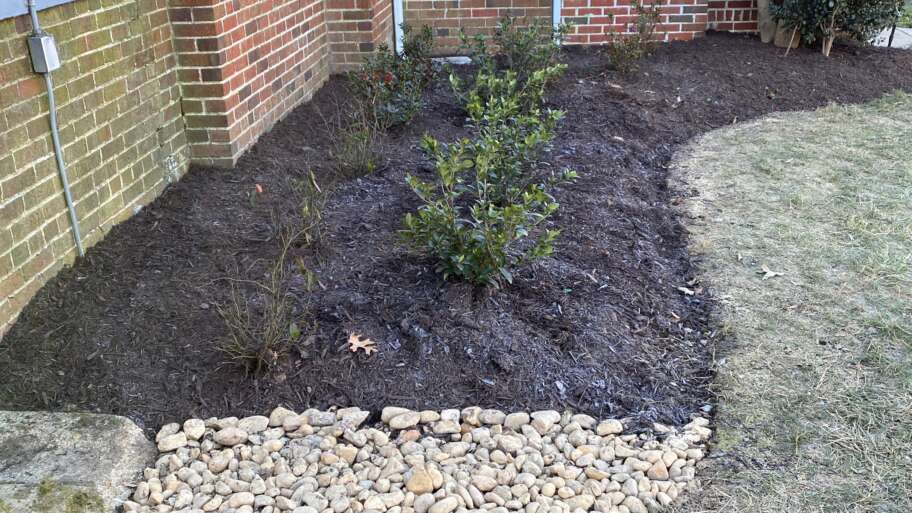BCLS Landscape Services of Central Virginia
After Labor Day is a great time to plant many things. The risk of heat stress is reduced and, because evaporation is generally less of a problem, watering is easier. Also, in the fall most plants are not putting much energy into growth of branches, stems, flowers, or foliage; thus, their energy can be applied to establishing roots.
JUST A FEW EXAMPLES OF CAUTIONS THAT MUST BE TAKEN…
- Grasses. This includes both perennial ornamental grasses and lawn seed. Ornamental grasses should be planted by October 10th. Seeding a new and over seeding an old lawn are best accomplished from September 1st to October 15th.
- Broad leaf evergreens – e.g., rhododendrons, evergreen azaleas, hollies (Ilex) of all sorts, Andromeda (Pieris), mountain laurels (Kalmia), boxwoods (Buxus). Broad leaf evergreen foliage must endure winter wind and sun and generally needs time to prepare for the stress. Be sure to water through Thanksgiving and consider using an anti-desiccant/anti-transpirant spray if you are expecting a very cold winter.
- Hemlocks (Tsuga). For hemlocks it is very important to water through Thanksgiving.
PLANTING
With fall plantings it is particularly important to disturb the root balls of plants as little as possible. Even heavily root bound plants should be handled slightly more gently than during the spring or summer.
WATERING
Keep watering until the ground freezes – not just until the first frost. Watering until the ground freezes hard (often mid-December) is the cheapest insurance you can buy for your plant’s first winter survival, particularly for broad leaf evergreens. Be sure not to over water. Plants require less water than they do during the heat of high summer. The goal is to keep the root ball uniformly moist but not soggy, providing the equivalent of 1” of natural rainfall per week.
FERTILIZING
The best time to fertilize woody plants is September up to mid-October; top growth has ceased and bud formation is almost complete, so nitrogen and other nutrients absorbed at this time are converted into stored carbohydrates, the energy reserve needed for strong growth the next spring. The mid October cut off is important – you don’t want to promote new growth that won’t have time to harden off. The next best time is in the spring before new leaves emerge. (Note that organic fertilizers are not effective unless soil temperatures are above 40 degrees F. Some gardeners will apply a slow release organic after the ground begins to freeze in December so that it is ready and waiting when soil temperatures rise in the spring.) Summer fertilization is usually discouraged.
MULCHING
Most gardeners apply mulch during the growing season to cut down on weeding and watering. Applying a winter  mulch is a different technique with different goals. An additional blanket of light mulch insulates the ground from the warmer daytime air temperatures during winter. While it does not keep plants warm, it does help keep the ground frozen which prevents plants heaving out of the ground from repeated cycles of freezing and thawing. This is particularly true in sunny areas. Spread winter mulch after the hard ground freeze. If you put it down too early, you may create the perfect nesting site for rodents; waiting until very late fall means rodents will have already found winter nesting sites elsewhere.
mulch is a different technique with different goals. An additional blanket of light mulch insulates the ground from the warmer daytime air temperatures during winter. While it does not keep plants warm, it does help keep the ground frozen which prevents plants heaving out of the ground from repeated cycles of freezing and thawing. This is particularly true in sunny areas. Spread winter mulch after the hard ground freeze. If you put it down too early, you may create the perfect nesting site for rodents; waiting until very late fall means rodents will have already found winter nesting sites elsewhere.
Winter mulch can also create a physical barrier against drying winter winds and sun. For example, piling mulch high around the stems of some roses and hydrangeas not only regulates soil temperatures but mechanically protects the stems of easily winter-killed plants. Salt marsh hay, boiled shredded hay, straw, pine needles and oak leaves are ideal for this purpose because as they insulate they “breathe” without compacting and they do not shed fertile seeds. Be sure to remove winter mulches gradually as the soil warms in spring. Some plants resent having their crowns covered in any way.



